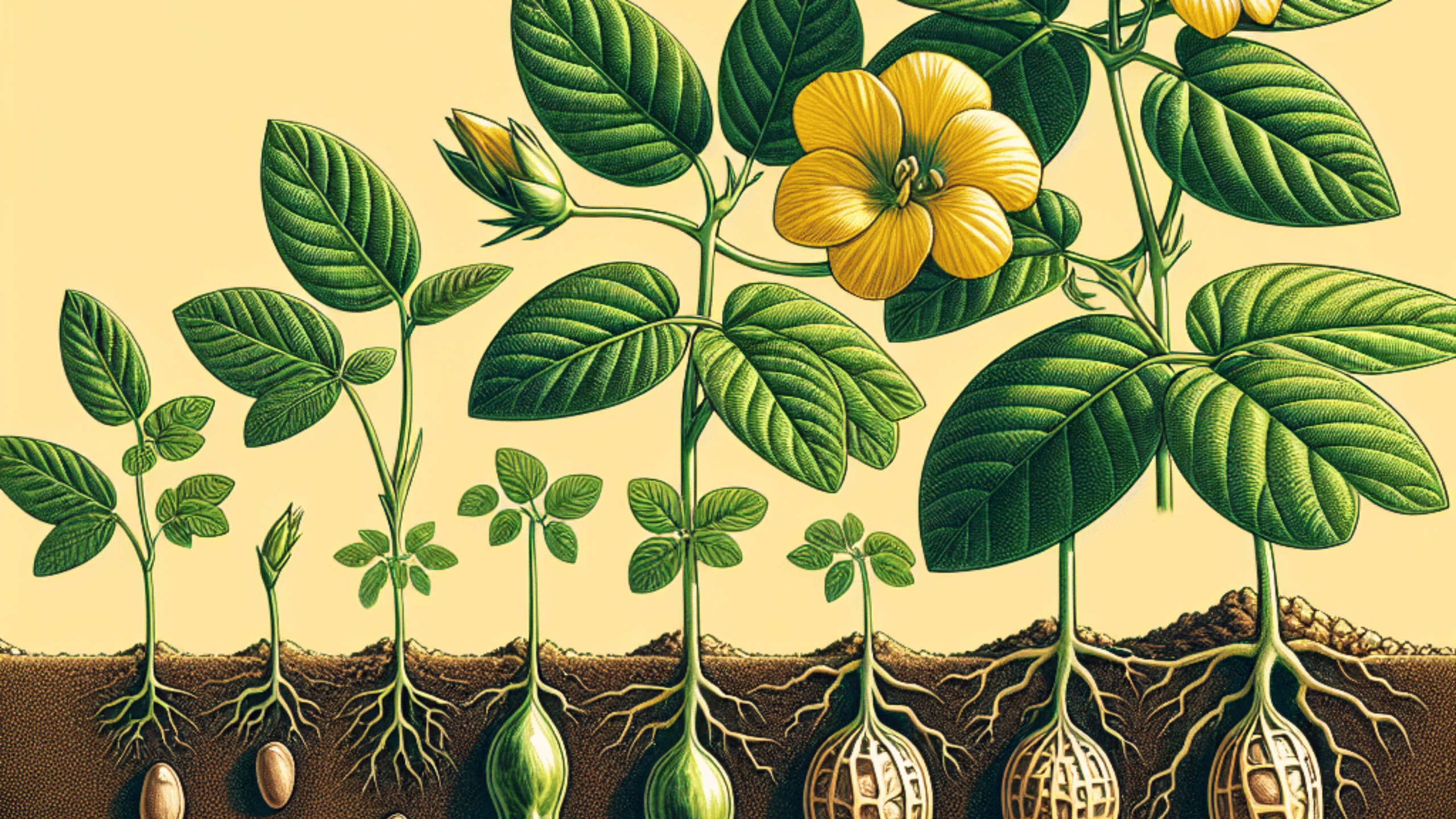Are you intrigued by the idea of harvesting your own peanuts right in your backyard or balcony? Growing peanuts at home is a rewarding experience that combines patience, care, and a bit of gardening know-how. In this guide, we’ll walk you through each step, from selecting the right seeds to enjoying freshly harvested peanuts. Whether you’re a seasoned gardener or a curious beginner, this easy-to-follow plan will help you grow delicious peanuts effortlessly.
Choose the Right Seeds
The journey begins with selecting quality peanut seeds. To ensure healthy growth, opt for raw, unsalted, and unroasted peanuts. These are the seeds that contain the germinal qualities needed to sprout and develop into peanut plants. Avoid using salted or roasted nuts, as the salt and heat can hinder germination and plant development.
You can purchase peanut seeds from gardening centers or online suppliers that specialize in seeds. Look for varieties that are suitable for your climate and growing conditions. If you’re unsure, consult local gardening experts or extension services for recommendations.
Preparing the Perfect Soil
Peanuts thrive in well-drained, light, and fertile soil. When preparing your planting bed, aim for a soft, loose soil that allows peanut roots to develop freely underground. Rich organic matter such as compost or aged manure can enhance soil fertility and promote vigorous plant growth.
The soil’s pH level is also crucial; peanuts prefer slightly acidic to neutral soil, with a pH between 5.9 and 7.0. If your soil is too acidic or alkaline, consider amending it with lime or sulfur accordingly. Well-drained soil helps prevent waterlogging, which can cause root rot and hinder peanut development.
Timing Your Planting
Timing is key when planting peanuts. The best period is late spring, once the danger of frost has passed and soil temperatures have warmed to at least 65°F (18°C). Peanuts are sensitive to cold, so planting too early can stunt growth or kill young plants.
Plant your seeds about 2.5 to 5 centimeters deep into the soil. Space the seeds approximately 10 to 15 centimeters apart to give each plant enough room to grow comfortably. This spacing encourages healthy development and easier maintenance.
Watering and Care

Peanuts need consistent moisture throughout their growing period, especially during flowering and pod development. Keep the soil evenly moist but not soggy—overwatering can lead to disease, while drought stress can reduce yield.
Regularly check soil moisture and water as necessary, particularly during dry spells. Applying mulch around the plants can help retain soil moisture, suppress weeds, and keep the soil temperature stable.
Be vigilant with weed control by removing unwanted plants that compete for nutrients and water. Hand-weeding is usually most effective for small gardens, and it minimizes damage to your peanut plants.
Monitoring Maturity
Patience is essential! Peanut plants generally take about 4 to 5 months to mature. As the plants grow, observe their foliage. When the leaves and stems begin to yellow and turn brown, it’s usually a sign that the peanuts are ready for harvest.
You can also gently dig around the base of a plant to check pod development. Ripe peanuts will feel firm, and the pods will be nearly full. Do not wait until the plants have completely dried out in the field; harvesting at the right time ensures better flavor and quality.
Harvesting and Drying
Once you’re confident that your peanuts are mature, carefully dig up the entire plant using a garden fork or shovel. Shake off excess soil and bring the plants to a well-ventilated, dry area.
For the drying process, hang the plants upside down in a warm, airy space for about two weeks. This curing stage allows excess moisture to evaporate, reducing the risk of mold and spoilage. Proper drying ensures that your peanuts stay fresh and crunchy when stored.
Enjoy Your Home-Grown Peanuts
After drying, gently remove the peanuts from the pods and inspect them. Store your freshly harvested peanuts in a cool, dry place in an airtight container. When stored properly, they can be enjoyed for months—roasted, boiled, or raw!
Growing your own peanuts at home is not only satisfying but also a fantastic way to connect with nature and learn more about plant cultivation. Plus, there’s nothing quite like the taste of peanuts you’ve grown yourself.
Final Tips for Success
- Patience is key; peanuts need time and care to flourish.
- Keep soil consistently moist, especially during flowering.
- Protect young plants from pests and harsh weather.
- Experiment with different peanut varieties to find what grows best in your area.
- Consider planting a few extra seeds to account for any unforeseen challenges.


https://t.me/s/BeeFCaSiNo_oFfICiALs